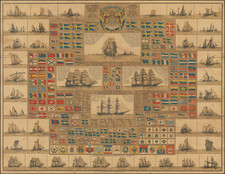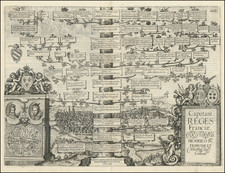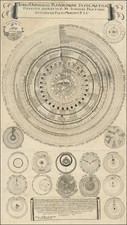This work commemorates Lindbergh's journey from New York to Paris, the first solo transatlantic flight. Lindbergh's feat received an unprecedented amount of attention in the US and in Europe, and memorabilia such as this one was produced around the world to commemorate Lindbergh's journey.
This piece pictures Lindbergh at the center with the title "Our Hero." He is surrounded by four images, the Spirit of St. Louis, the plane he flew in, The Eiffel Tower and the Statue of Liberty, symbols of the towns he visited, and an eagle labeled victory.
Lindbergh, a Complicated Figure
Lindbergh's life journey took him from being one of the most adored men in the US to being nearly universally despised in less than two decades. His rise to fame was rapid and sharp. He was trained as a mail pilot but decided he wanted to pursue the Orteig Prize, a twenty-five thousand dollar reward for the first successful solo nonstop flight between Paris and New York. The competition was fierce, with many more experienced pilots having tried and failed.
Lindbergh managed to scrape together funds to finance his voyage, and he built his Spirit of St. Louis in San Diego in the beginning of 1927. He proceeded to fly it from New York to Paris in 33 and a half hours, thus winning the prize at the age of 25. He was given a hero's welcome in Paris with universal acclaim. That same year he became Time's first Man of the Year and lived off of the fame for the next several years.
The first major downturn in Lindbergh's life would be the kidnapping of Charles Lindbergh Jr. The Lindbergh kidnapping, widely and possibly accurately claimed to be the "Crime of the century," once again brought Lindbergh to the center of attention. The public followed the developments of this story for the next two years and the ordeal had a large impact on Lindbergh.
The final major chapter in Lindbergh's life was, of course, his involvement in the America First Committee. Officially a nonintervention movement, it, and particularly his involvement, had anti-semitic undertones. He made several statements that appeared to place him as a white supremacist and Nazi sympathizer. The public and the Roosevelt administration were particularly displeased with his anti-war stance, which was viewed as non-patriotic.
Lindbergh eventually joined the war effort as a civilian, working as an engineer throughout the South Pacific and even conducting bombing missions. Later in his life, he appeared to walk away from some of his more racist views and focused much of his time on environmental causes.












![[ Plasterers Company -- Certification of Master Plasterer Edward Evans ]](https://storage.googleapis.com/raremaps/img/small/97322.jpg)
![(Nuremberg Chronicle) [Geneology of the Tribes of Israel]](https://storage.googleapis.com/raremaps/img/small/98708.jpg)
![(Mississippi Bubble) [Lukewarm Month's Commemoration, due to the recently acquired Golden Age, enchanted in Horse Figs. New Year's Gift.]](https://storage.googleapis.com/raremaps/img/small/94313.jpg)